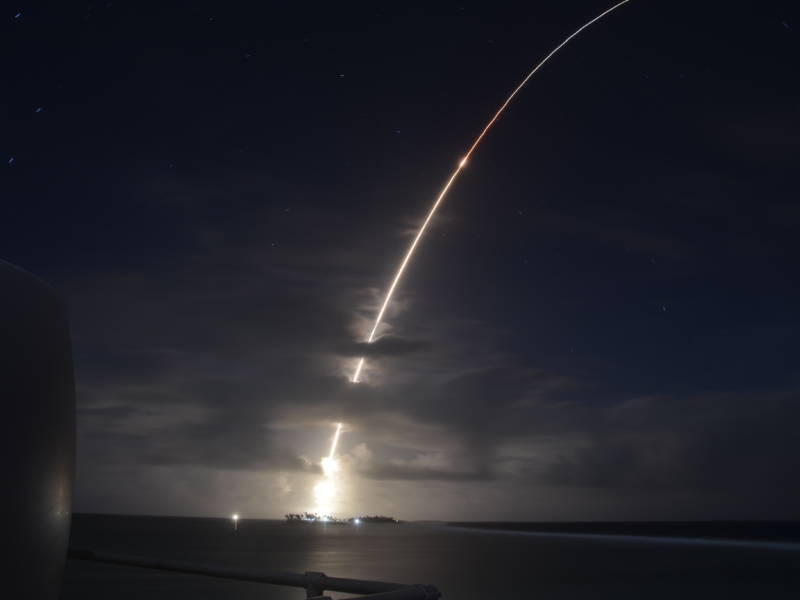The U.S. Missile Defense Agency says it has conducted another successful test of its ground-based interceptor system.
Monday's test involved a missile carrying a dummy warhead fired from Kwajalein Atoll in the Pacific Ocean toward the West Coast of the United States. Sensors tracked the missile as it flew, and then two interceptors were launched from Vandenberg Air Force Base in Santa Barbara County.
The first interceptor successfully slammed into the dummy warhead high over the Pacific. As designed, the second interceptor appeared to continue to seek a target, eventually hitting the largest chunk of debris it could find, according to Thomas Karako, director of the Missile Defense Project at the Center for Strategic and International Studies.
"This was the first salvo test," Karako says, referring to the fact that more than one interceptor was fired at a target. It proved that the trailing interceptor wouldn't be confused by the leading one and could continue to seek a target. That's important, Karako says, because if the system was used against a real warhead, multiple interceptors would be fired.
"In the event of a real threat, of course they would fire more than one," he says.

9(MDAxOTAwOTE4MDEyMTkxMDAzNjczZDljZA004))